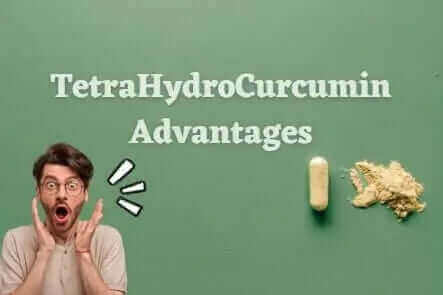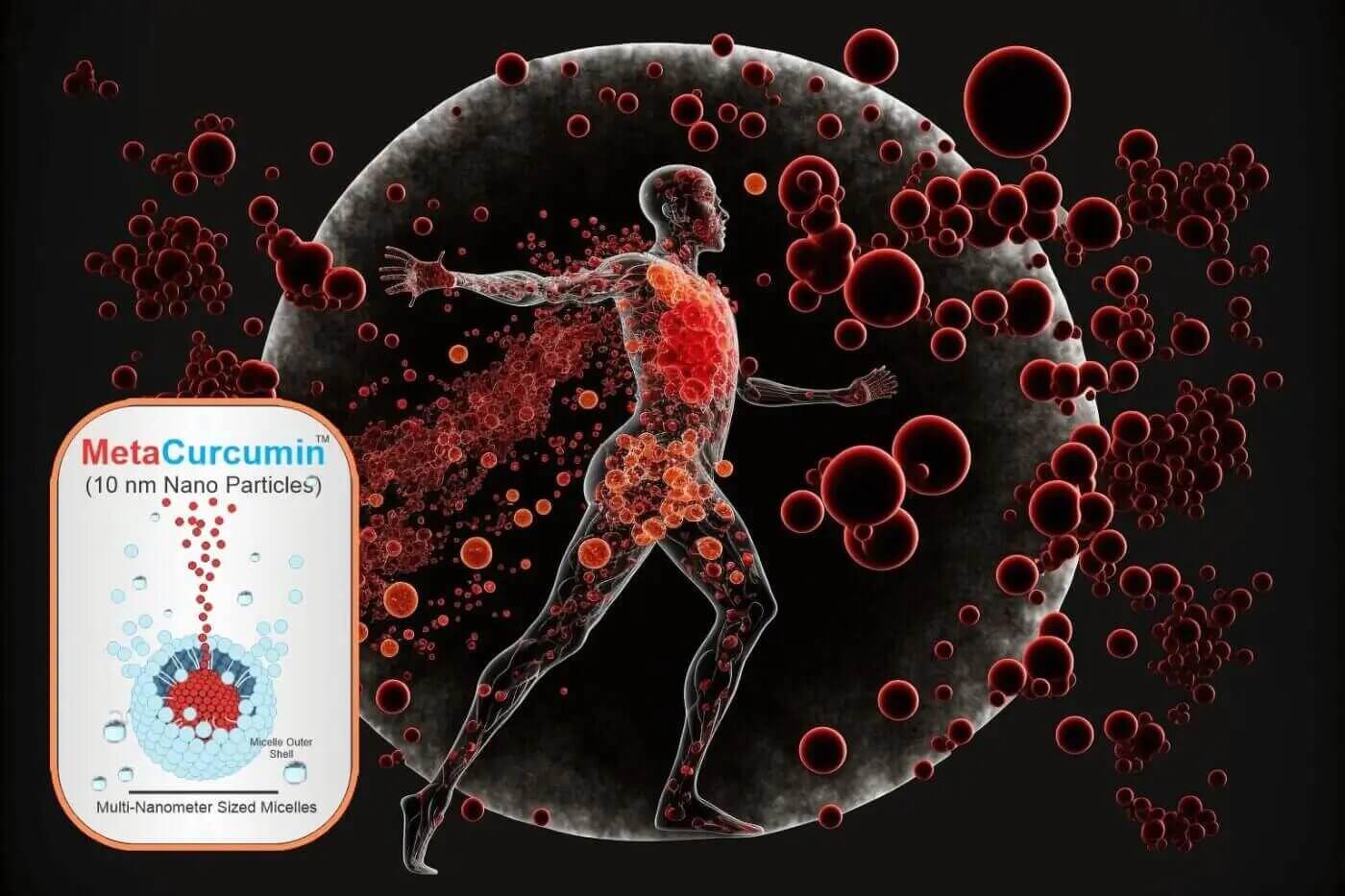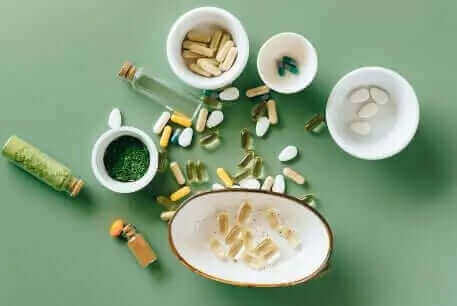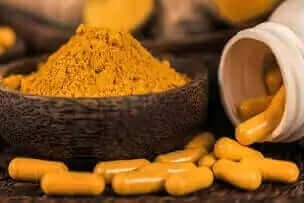Tetrahydrocurcumin: The Revolutionary Metabolite Transforming Health and Wellness
Tetrahydrocurcumin stands as one of nature's most powerful health compounds, offering extraordinary benefits that extend far beyond traditional antioxidants. This remarkable metabolite of curcumin delivers enhanced bioavailability and superior effectiveness across multiple health domains, from cognitive function to metabolic health. Scientists have discovered that tetrahydrocurcumin not only matches but often surpasses its parent compound curcumin in delivering measurable health improvements.
For those seeking optimal wellness solutions, tetrahydrocurcumin represents a breakthrough in natural supplementation. Research demonstrates its unique ability to support brain health, manage blood sugar levels, promote healthy circulation, and protect vital organs. What makes this compound particularly exciting is its enhanced absorption profile, allowing your body to utilize its benefits more effectively than traditional curcumin supplements.
Note: Throughout scientific literature, tetrahydrocurcumin is often abbreviated as THC. To avoid confusion with other compounds, we refer to it as 4-HC, reflecting its four hydrogen atoms that distinguish this powerful metabolite.
Understanding Tetrahydrocurcumin's Unique Properties
The journey of tetrahydrocurcumin begins when your body metabolizes curcumin. Through natural enzymatic processes, curcumin transforms into several metabolites, with tetrahydrocurcumin emerging as the most bioactive and beneficial form. This transformation creates a compound that crosses biological barriers more easily, remains in your system longer, and delivers enhanced therapeutic effects.
Research reveals that tetrahydrocurcumin possesses distinct advantages over standard curcumin supplements. Its molecular structure allows for better cellular penetration, improved stability in biological systems, and enhanced interaction with key enzymes and receptors throughout your body. These characteristics make tetrahydrocurcumin an ideal choice for individuals seeking maximum benefits from their supplementation routine.
Cognitive Enhancement and Nootropic Benefits of Tetrahydrocurcumin

One of the most fascinating aspects of tetrahydrocurcumin involves its profound impact on cognitive function. At the heart of this benefit lies its ability to protect and preserve acetylcholine, often called the "learning neurotransmitter." Acetylcholine plays crucial roles in memory formation, attention span, learning capacity, and overall mental alertness.
Your brain relies on optimal acetylcholine levels for sharp thinking and quick recall. Unfortunately, an enzyme called acetylcholinesterase (AChE) constantly breaks down this vital neurotransmitter. This is where tetrahydrocurcumin shines brilliantly. Scientific studies demonstrate that tetrahydrocurcumin inhibits AChE activity nearly twice as effectively as regular curcumin, helping maintain healthy acetylcholine levels for enhanced cognitive performance.
Many users report experiencing improved mental clarity, better focus during study sessions, and enhanced cognitive endurance when supplementing with tetrahydrocurcumin. Athletes and students particularly appreciate these nootropic benefits, finding that their mental performance remains sharp even during demanding activities. This superior cognitive support makes tetrahydrocumin an excellent choice for anyone looking to optimize their mental capabilities naturally.
How Tetrahydrocurcumin Protects Brain Health
Beyond acetylcholine protection, tetrahydrocurcumin offers comprehensive brain health benefits through multiple mechanisms. Its potent antioxidant properties shield neurons from oxidative stress, while its anti-inflammatory effects help maintain healthy brain tissue. Research suggests that regular supplementation with tetrahydrocurcumin may support long-term cognitive health and mental acuity.
The compound's ability to cross the blood-brain barrier efficiently means it can deliver these protective benefits directly where they're needed most. This direct action in brain tissue helps explain why many users experience such noticeable improvements in mental performance and overall cognitive wellbeing when incorporating tetrahydrocurcumin into their daily routine.
Superior Anti-Inflammatory Properties of Tetrahydrocurcumin

Inflammation serves as your body's natural response to stress and injury, but chronic inflammation can lead to numerous health challenges. Tetrahydrocurcumin emerges as a powerful ally in maintaining healthy inflammatory responses throughout your body. What makes this compound particularly impressive is its ability to match or exceed curcumin's anti-inflammatory effects while requiring significantly lower doses.
Groundbreaking research from 1982 revealed that tetrahydrocurcumin reduced inflammation by 56.6% at just 30 mg/kg dosage. Remarkably, this level of effectiveness was achieved at half the dose required for curcumin to produce similar results. This enhanced potency means you can experience profound anti-inflammatory benefits while taking smaller amounts of supplement, improving both compliance and cost-effectiveness.
Targeting Inflammatory Markers with Tetrahydrocurcumin
Modern research has uncovered the precise mechanisms through which tetrahydrocurcumin combats inflammation. Studies show it significantly reduces key inflammatory markers including interleukin-1, interleukin-6, TNF-alpha, and prostaglandin E2. These inflammatory mediators, when left unchecked, contribute to various chronic conditions and accelerated aging processes.
By keeping these inflammatory markers in check, tetrahydrocurcumin helps your body maintain optimal function across all systems. Athletes appreciate its ability to support faster recovery, while individuals with joint concerns find relief through its targeted anti-inflammatory action. This comprehensive inflammatory support makes tetrahydrocurcumin an invaluable tool for anyone seeking to optimize their health and vitality.
Blood Sugar Management Benefits of Tetrahydrocurcumin

Perhaps one of the most remarkable benefits of tetrahydrocurcumin lies in its ability to support healthy blood sugar levels and insulin function. Maintaining optimal glucose metabolism is fundamental to overall health, affecting everything from energy levels to long-term wellness outcomes. Tetrahydrocurcumin offers powerful support for this critical aspect of metabolic health.
Scientific studies have demonstrated that tetrahydrocurcumin significantly outperforms regular curcumin in blood sugar management. In controlled research, subjects receiving tetrahydrocurcumin showed blood sugar levels 18.2% lower and plasma insulin levels 12.5% higher compared to those taking curcumin. These impressive results highlight tetrahydrocurcumin's superior ability to support healthy glucose metabolism.
Supporting Pancreatic Health with Tetrahydrocurcumin
The secret behind tetrahydrocurcumin's blood sugar benefits involves its positive effects on pancreatic beta cells. These specialized cells produce insulin, the hormone responsible for regulating blood glucose. Research shows that tetrahydrocurcumin helps stimulate and protect these vital cells, supporting your body's natural ability to maintain healthy blood sugar levels.
This pancreatic support translates into real-world benefits for users. Many report more stable energy levels throughout the day, reduced cravings, and better overall metabolic function when supplementing with tetrahydrocurcumin. For individuals concerned about maintaining healthy blood sugar levels, this compound offers natural, effective support backed by solid scientific evidence.
Cardiovascular and Cholesterol Benefits

The cardiovascular benefits of tetrahydrocurcumin extend well beyond blood sugar management. Research reveals its impressive ability to support healthy cholesterol levels and overall heart health. Studies demonstrate that tetrahydrocurcumin helps reduce harmful LDL cholesterol while simultaneously increasing beneficial HDL cholesterol, creating an optimal lipid profile for cardiovascular wellness.
Additionally, tetrahydrocurcumin supports healthy circulation through its vasoprotective properties. It helps maintain proper blood vessel function and promotes healthy blood flow throughout your body. This comprehensive cardiovascular support makes tetrahydrocurcumin an excellent choice for individuals focused on heart health and longevity.
Protecting Blood Vessels with Tetrahydrocurcumin
Scientific research has uncovered another crucial benefit of tetrahydrocurcumin: its ability to maintain healthy blood vessel function even under challenging conditions. Studies show that tetrahydrocurcumin helps preserve normal vasodilation, ensuring efficient blood flow and oxygen delivery to all tissues. This protective effect proves particularly valuable for individuals dealing with metabolic challenges that can impact circulation.
By supporting both cholesterol balance and blood vessel health, tetrahydrocurcumin offers comprehensive cardiovascular protection. Users often report feeling more energetic and experiencing better exercise performance, likely due to improved circulation and oxygen delivery throughout their bodies.
Liver Support and Protection

Your liver performs countless vital functions, from detoxification to metabolism regulation. Tetrahydrocurcumin emerges as a powerful hepatoprotective agent, offering superior liver support compared to regular curcumin. Research demonstrates its ability to protect liver cells from damage while supporting the organ's natural regenerative processes.
Studies reveal that tetrahydrocurcumin helps prevent excessive fibrosis, protects hepatocytes from programmed cell death, and reduces harmful activation of hepatic stellate cells. These protective mechanisms work together to maintain optimal liver function and support your body's natural detoxification processes. For individuals concerned about liver health, tetrahydrocurcumin offers scientifically validated protection.
Optimal Dosage and Safety Guidelines for Tetrahydrocurcumin
Understanding proper dosage ensures you maximize the benefits of tetrahydrocurcumin supplementation. Based on extensive research, experts recommend 200mg taken twice daily for optimal results. This dosage provides powerful health benefits while maintaining excellent safety and tolerability. Taking tetrahydrocurcumin before meals, particularly when blood sugar support is desired, enhances its effectiveness.
Safety studies demonstrate that tetrahydrocurcumin exhibits an excellent safety profile, with no adverse effects observed even at doses significantly higher than recommended amounts. This strong safety record, combined with centuries of traditional use of curcumin compounds, provides confidence in tetrahydrocurcumin supplementation for long-term health support.
Choosing Quality Tetrahydrocurcumin Supplements
When selecting a tetrahydrocurcumin supplement, quality matters tremendously. Look for products that combine tetrahydrocurcumin with advanced delivery systems for maximum absorption. Premium formulations often include both curcumin and tetrahydrocurcumin, providing synergistic benefits that exceed what either compound offers alone.
The most effective supplements utilize liquid capsule technology or micelle formulations to enhance bioavailability further. These advanced delivery methods ensure your body can fully utilize the powerful benefits of tetrahydrocurcumin, maximizing your investment in health and wellness.
Real-World Applications and Success Stories
Users of tetrahydrocurcumin report diverse benefits across multiple areas of health. Athletes appreciate faster recovery times and reduced exercise-induced discomfort. Students and professionals value the cognitive enhancement and sustained mental energy. Individuals managing metabolic health celebrate more stable blood sugar levels and improved energy throughout the day.
These real-world experiences align perfectly with scientific research, demonstrating that tetrahydrocurcumin delivers on its promise of comprehensive health support. Whether you're seeking cognitive enhancement, metabolic support, or overall wellness optimization, tetrahydrocurcumin offers scientifically validated benefits that can transform your health journey.
The Future of Tetrahydrocurcumin Research
As research into tetrahydrocurcumin continues expanding, scientists uncover new potential applications and benefits. Current investigations explore its role in supporting healthy aging, immune function, and cellular health. The compound's unique properties and superior bioavailability position it as a leading natural health solution for the future.
The growing body of evidence supporting tetrahydrocurcumin's benefits has sparked increased interest from both researchers and health-conscious consumers. As more studies emerge, we anticipate discovering additional ways this remarkable compound can support human health and vitality.
Frequently Asked Questions About Tetrahydrocurcumin
What makes tetrahydrocurcumin different from regular curcumin?
Tetrahydrocurcumin is a metabolite of curcumin with superior bioavailability and enhanced effectiveness. Research shows it crosses biological barriers more easily, remains in your system longer, and often delivers stronger benefits at lower doses compared to standard curcumin. Its unique molecular structure allows for better cellular penetration and more efficient interaction with key enzymes throughout your body.
How quickly can I expect to see results from tetrahydrocurcumin supplementation?
Many users report feeling cognitive benefits like improved focus and mental clarity within the first week of supplementation. Anti-inflammatory effects typically become noticeable within 2-3 weeks, while metabolic benefits such as improved blood sugar regulation may take 4-6 weeks of consistent use. Individual results vary based on factors like dosage, overall health status, and lifestyle habits.
Can I take tetrahydrocurcumin with other supplements?
Tetrahydrocurcumin generally combines well with other supplements and may enhance the effects of certain nutrients. It pairs particularly well with omega-3 fatty acids, black pepper extract (piperine), and other antioxidants. However, always consult with a healthcare provider before combining supplements, especially if you take prescription medications or have existing health conditions.
What is the best time to take tetrahydrocurcumin?
For optimal results, take tetrahydrocurcumin twice daily, ideally 15-30 minutes before meals. This timing maximizes absorption and enhances blood sugar support benefits. Morning and evening doses help maintain steady levels throughout the day. Some users prefer taking it before exercise or study sessions to maximize cognitive and anti-inflammatory benefits.
Are there any side effects associated with tetrahydrocurcumin?
Tetrahydrocurcumin demonstrates an excellent safety profile with no significant side effects reported in research studies, even at doses higher than recommended amounts. Some individuals may experience mild digestive changes when first starting supplementation, which typically resolve as your body adjusts. The compound's long history of safe use as part of turmeric consumption provides additional confidence in its safety.
How does tetrahydrocurcumin support brain health specifically?
Tetrahydrocurcumin supports brain health through multiple mechanisms. It protects acetylcholine levels by inhibiting acetylcholinesterase nearly twice as effectively as regular curcumin, enhancing memory and learning. Its potent antioxidant properties shield neurons from oxidative damage, while its anti-inflammatory effects help maintain healthy brain tissue. The compound efficiently crosses the blood-brain barrier to deliver these benefits directly to brain cells.
Can tetrahydrocurcumin help with exercise recovery?
Yes, tetrahydrocurcumin offers excellent support for exercise recovery through its powerful anti-inflammatory properties. It helps reduce exercise-induced inflammation and oxidative stress, potentially speeding recovery time between workouts. Many athletes report less muscle soreness and improved performance when supplementing with tetrahydrocurcumin. Its circulation-supporting benefits also enhance oxygen delivery to muscles during and after exercise.
Is tetrahydrocurcumin suitable for long-term use?
Research indicates that tetrahydrocurcumin is safe and beneficial for long-term supplementation. Its excellent safety profile, combined with centuries of traditional use of curcumin compounds, supports extended use. Many of its benefits, particularly for metabolic health and cognitive function, actually improve with consistent, long-term supplementation. Regular use helps maintain optimal levels in your system for sustained health benefits.
How does tetrahydrocurcumin compare to other natural anti-inflammatories?
Tetrahydrocurcumin stands out among natural anti-inflammatories due to its superior bioavailability and multi-targeted approach. While compounds like resveratrol or quercetin offer benefits, tetrahydrocurcumin provides comparable or superior anti-inflammatory effects at lower doses. It uniquely combines anti-inflammatory action with cognitive enhancement, metabolic support, and organ protection, making it a more comprehensive solution than single-action compounds.
What quality markers should I look for in tetrahydrocurcumin supplements?
Look for supplements that clearly state the tetrahydrocurcumin content and use advanced delivery systems like liquid capsules or micelle technology. Quality products often combine tetrahydrocurcumin with complementary ingredients for enhanced absorption. Third-party testing, GMP certification, and transparent labeling indicate superior quality. Premium formulations may include both curcumin and tetrahydrocurcumin for synergistic benefits.
Conclusion: Embracing the Power of Tetrahydrocurcumin
Tetrahydrocurcumin represents a remarkable advancement in natural health supplementation. Its scientifically proven benefits across cognitive function, inflammation management, metabolic health, cardiovascular support, and liver protection make it an invaluable tool for comprehensive wellness. The compound's superior bioavailability and effectiveness at lower doses set it apart from traditional supplements.
Whether you're seeking sharper mental performance, better metabolic health, faster exercise recovery, or overall vitality enhancement, tetrahydrocurcumin offers evidence-based support for your health journey. As research continues revealing new benefits and applications, this powerful compound stands poised to revolutionize how we approach natural health and wellness optimization.
Ready to experience the transformative benefits of tetrahydrocurcumin? Consider trying RevGenetics' MetaCurcumin 277x Super Curcumin + TetraHydroCurcumin, featuring the world's most potent liquid turmeric formulation with visible tetrahydrocurcuminoids in every capsule. Backed by a 30-day satisfaction guarantee, you can explore these remarkable benefits risk-free.
References
- Acetylcholine - Neurotransmitter Function and Regulation
- The Role of Acetylcholine in Learning and Memory
- Cognitive Functions of Acetylcholine Systems
- Tetrahydrocurcumin and Acetylcholinesterase Inhibition
- Anti-inflammatory Properties of Tetrahydrocurcumin
- Mechanisms of Tetrahydrocurcumin Anti-inflammatory Action
- Inflammatory Mediators and Chronic Disease
- Interleukins in Inflammation and Disease
- Tetrahydrocurcumin Effects on Blood Glucose and Insulin
- Pancreatic Beta Cells and Diabetes
- Tetrahydrocurcumin Stimulation of Pancreatic Beta Cells
- Curcumin and Blood Sugar Regulation
- Blood Glucose and Lipid Metabolism Connection
- Tetrahydrocurcumin Effects on Lipid Profiles
- Vascular Function and Nitric Oxide
- Hepatic Fibrogenesis and Liver Health
- Safety Profile of Tetrahydrocurcumin







